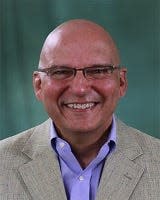FORNL talk Tuesday on exploding stars, gravitational waves
Explosive deaths of massive stars (supernovae) and gravitational waves will be the topic of the Tuesday, June 6, meeting at noon of Friends of Oak Ridge National Laboratory at the UT Resource Center, 1201 Oak Ridge Turnpike.
The speaker will be Anthony "Tony" Mezzacappa, the Newton W. and Wilma C. Thomas Chair of Theoretical and Computational Astrophysics in the Department of Physics and Astronomy at the University of Tennessee at Knoxville (UTK), the director of the Joint Institute for Computational Sciences, and ORNL corporate fellow (emeritus).

He will speak on “Gravitational Waves from Core Collapse Supernovae.” Mezzacappa, who specializes in the theory of core-collapse supernovae, works with a group that uses supercomputers at ORNL for terascale and exascale simulation of supernovae in the universe.
Attendees may bring their own lunch to eat at the hybrid meeting. To view the noon lecture virtually, click on the talk title on the homepage of the www.fornl.org website and then click on the Zoom link near the top of the page describing the lecture.
Here is Mezzacappa’s summary of his talk:
“Einstein’s theory of gravity is among the greatest products of the human mind that has emerged over the course of our history. According to Einstein, gravity is a geometric phenomenon, a manifestation of the curvature of the fabric we call spacetime.
“And this fabric can support, like the surface of a pond, waves that are generated by catastrophic events such as colliding black holes, colliding neutron stars and the explosive deaths of massive stars known as core collapse supernovae.
“A new window on the universe was opened when in 2015 gravitational waves were detected for the very first time, from the collision of two black holes 1.3 billion light years away. This was made possible by more than 50 years of development by the Laser Interferometer Gravitational Wave Observatory (LIGO) Scientific Collaboration.
“Since then, LIGO has detected many collisions between two black holes and between two neutron stars. The gravitational waves from a core collapse supernova have yet to be detected, and scientists are preparing fervently for this eventuality.
“Core collapse supernovae are directly or indirectly responsible for the lion’s share of the elements in the periodic table, the building blocks of life as we know it. The detection of gravitational waves from a core collapse supernova will be important. Moreover, gravitational waves from such a supernova will bring volumes of information about the dynamics of the central engine powering these explosions, something the ORNL-UT supernova group has studied for many years.”
Before he moved to UTK, Mezzacappa was a group leader for theoretical physics in ORNL’s Physics Division and group leader for computational astrophysics in ORNL’s Computational Sciences and Mathematics Division. After he joined the ORNL staff in 1996, he created a new research program in theoretical and computational astrophysics.
Previously, Mezzacappa held postdoctoral appointments at the University of Pennsylvania and the University of North Carolina at Chapel Hill. He earned a B.S. degree in physics at M.I.T., an M.A. degree in physics from Columbia University and a Ph.D. in physics at the Center for Relativity at the University of Texas at Austin.
Mezzacappa received a Department of Energy Young Scientist Award from Secretary of Energy Bill Richardson and a Presidential Early Career Award for Scientists and Engineers (PECASE) from President Clinton in 1999 for his contributions to core collapse supernova theory.
He was the principal investigator of the first large-scale, multi-investigator, multi-institution computational astrophysics effort in the United States to focus on core-collapse supernovae. It was called the DOE SciDAC Terascale Supernova Initiative.
Mezzacappa was elected a fellow of the American Physical Society in 2004 and a UT-Battelle Corporate Fellow in 2005 in recognition of his supernova research and his role, much more broadly, in the development of computational science in the United States.
Mezzacappa has authored or co-authored more than 200 scientific publications and has given numerous invited talks internationally. He and his work have been featured on the National Geographic Channel and in Scientific American magazine.
This article originally appeared on Oakridger: FORNL talk Tuesday on exploding stars, gravitational waves
